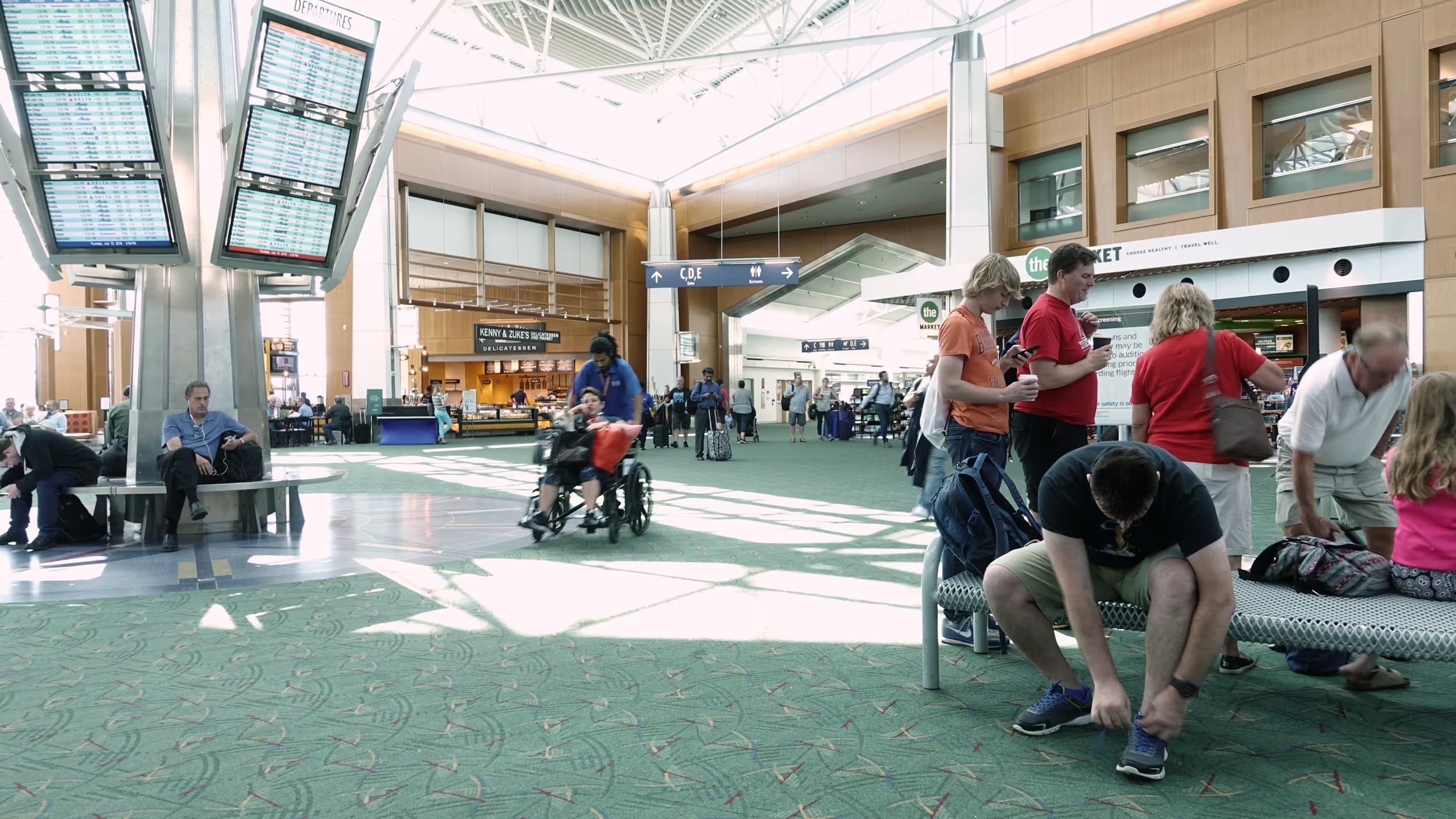IRS Per Diem Rates for 2025: What Changed

Save Time & Money: Let Engine.com Deal With Your Business Travel
Per diem should not feel like a maze. Below you will find an at-a-glance card with the 2025 numbers, what changed this year, and quick answers to the questions travelers and finance teams ask most, including the 75% first and last day rule.
If you are managing real-world trips, the policy is only half the story. Incidentals and folio chaos are where time and money disappear. Engine helps teams book per-diem-friendly stays, cover incidentals (no personal cards, fewer check-in issues), and consolidate folios so reconciliation takes minutes, not days.

Per Diem Basics for 2025
Per diem rates set the maximum daily amount you can reimburse employees for travel expenses without tax complications.
Instead of collecting receipts, you pay fixed daily amounts for lodging, meals, and incidentals. This eliminates administrative headaches while giving crews predictable compensation.
The 2025 rates include significant changes that can affect your travel budget. This article covers what changed, how to choose the right method for your operations, and practical implementation guidance.

What Changed in 2025 Per Diem Rates
- Standard lodging increased $107 → $110; standard M&IE increased $59 → $68.
- M&IE tiers updated from $59–$79 to $68–$92 for non-standard areas (NSAs).
- IRS high-low per diem is $319 / $225 with M&IE portions $86 / $74.
- New or newly timed high-cost localities in the IRS list include Los Angeles, CA; Mammoth Lakes, CA; Palm Springs, CA; South Lake Tahoe, CA; Boise, ID; Coeur d’Alene, ID; Bend, OR; Burlington, VT along with other timing changes.
- Effective for travel on or after Oct 1, 2024.
In 2025, the standard per diem rate for most locations jumped to $178 per day. That breaks down to $110 for lodging and $68 for meals and incidentals.
The lodging piece increased from $107, and meals and incidentals increased from $59 to $68—a $9 daily bump that adds up fast on longer projects.
These rates cover the 48 continental states and Washington DC only. The Department of Defense sets separate rates for Alaska, Hawaii, Guam, and Puerto Rico.
New High-Cost Locations For 2025
These locations get higher rates because hotel and restaurant costs run above national averages:
- Los Angeles, Mammoth Lakes, Palm Springs, and South Lake Tahoe in California
- Boise and Coeur d'Alene in Idaho
- Bend, Oregon
- Burlington, Vermont
Cities That Dropped Back to Standard Rates
The savings matter when you're booking multiple rooms across extended projects. If you sent crews to these places last year, you can reduce per diem costs this year:
- Fort Wayne, Indiana
- Canton and Mentor, Ohio
- East Greenwich/Warwick, Rhode Island
- Waco, Texas
- Wisconsin Dells, Wisconsin
Transportation industry workers get significantly higher rates for 2025: $80 per day within the continental US, $86 for Alaska, Hawaii, and territories. The rates cover only meals since drivers often sleep in their vehicles.

What Per Diem Covers and What It Doesn’t
Per diem is a fixed, daily amount that crews can spend however they want on covered expenses. Eat cheap and pocket the difference, or upgrade their accommodations—their choice.
This system works because it shifts responsibility to your crew while giving you predictable costs. No more arguing about whether a $15 breakfast was reasonable or if the premium hotel upgrade was necessary. Per diem eliminates receipt collection for everything except mileage.
What Per Diem Covers
Per diem covers the essential travel expenses your crew needs to do their job away from home base.
- Hotel stays for overnight jobs—whether it's a Holiday Inn, extended stay apartment, or Airbnb near the job site
- All meals during travel days—restaurant meals, room service, groceries bought for hotel eating
- Ground transportation—airport shuttles, rental cars, Uber rides, public transit to get between airport, hotel, and work site
- Tips and service fees—bellhop tips, dry cleaning if staying extended periods, ATM fees, parking, tolls
What Per Diem Doesn’t Cover
Mileage gets handled separately from per diem. When crew members drive their personal vehicles to project sites, reimburse them at 70 cents per mile. This covers gas, wear and tear, and vehicle depreciation.
Crews also can’t use per diem for:
- Alcohol purchases
- Entertainment expenses
- Personal items like souvenirs
- Anything unrelated to business needs

How to Handle Per Diem: 3 Methods for Your Business
Pick the one that matches how your projects actually work.
Standard Method: Exact Rates by Location
Using the standard method, a job in downtown San Francisco gets a different rate than one in Sacramento. So construction companies working across state lines and service companies with varied client locations get the most accurate reimbursements this way.
To use the standard method of per diem, you’ll use GSA.gov's per diem lookup tool, enter the city and state where your crew will sleep, and use the exact daily rate shown. The General Services Administration publishes federal per diem rates each October.
The downside to this method comes when you're booking constantly across dozens of different cities—the lookup process can slow down your workflow. To prevent this, create a reference sheet of common project locations with their rates, or assign someone to handle lookups in batches rather than one-by-one.
High-Low Method: Two Rates for Everything
Companies with consistent travel patterns benefit most from the high-low method. For instance, manufacturing companies with plants in similar-sized cities and energy companies working in comparable markets can simplify their processes without losing much accuracy.
For this method, the IRS sets two rates: $319 per day for high-cost areas, $225 per day for everywhere else. You’ll pick which category each location falls into and apply the appropriate rate.
You can check if your crew's destination appears on the IRS high-cost location list published each year. Cities like San Francisco, New York, Boston, and Washington, DC qualify as high-cost. Most other cities, like Phoenix, Nashville, and Kansas City, use the standard rate.
The main advantage of this method is eliminating the need to look up individual city rates, making it easier to explain to your crew and accounting team.
The limitation is that you might overpay in some markets and underpay in others, but the averaging works if your overall travel patterns balance out.
M&IE Only: Day Trips Without Hotels
M&IE stands for meals and incidentals, and it’s perfect for local service calls, day-long installations, and maintenance work within driving distance of home base.
You’ll use only the meals and incidentals portion of the per diem rate—$68 per day for most locations, up to $92 for high-cost cities. Look up the location on GSA.gov and use just the M&IE amount. Ignore the lodging portion since crew members return home each night.
The downside is it's limited to day trips only. Businesses often use a combined approach, M&IE for day trips and full per diem for overnight projects. Match the method to the actual travel requirements rather than forcing everything into one system.
The Tax Reality: Why Following IRS Rates Matters
The IRS per diem rate isn’t required, but most operations managers use it for a variety of reasons:
Taxes: Pay a crew member $200 per day in a standard rate location, and they owe income tax on the extra $22. Multiply that across a 15-person crew on a month-long project, and you've created a significant tax burden for your people.
Paperwork: Your company needs expense reports that show the business purpose, location, and duration of travel. Keep these simple. A project tracking sheet with dates, locations, and crew assignments covers the requirement.
Self-employed contractors: They must use the standard method (exact rates by location) to claim per diem deductions. The high-low method doesn't work for individual tax returns.
Pay within the limits, skip the extra paperwork, avoid crew complaints about unexpected tax bills.

Making Per Diem Work for Your Team: Field Operations Best Practices
Knowing the rates is just the starting point. The real challenge is building per diem systems that actually work when your crews are scattered across job sites, projects change overnight, and you need answers faster than bureaucratic processes allow.
Prepaid or Reimbursement?
Prepaid works better for longer projects. Your crew needs upfront money for hotels and meals when they can't front three weeks of expenses.
Reimbursement works for short trips. When your team can cover expenses for a few days without breaking the bank.
Real example: Your 12-person concrete crew works a Denver project for three weeks. Standard per diem is $178/day. That's $3,738 each crew member has to front if you use reimbursement.
Downtown hotels near the job site run $150+ per night, but the $110 lodging allowance covers most extended-stay options if you book smart. Try extended-stay hotels with weekly rates, or book multiple rooms at hotels that give crew discounts.
Use High-Low Method for Teams That Move Around
When your teams hit different rate zones constantly, stop doing rate lookups every day.
Network installation teams handle fiber rollouts across five states with frequent location changes. The high-low method works here—most metro areas where fiber installation happens qualify as high-cost, while rural tower sites fall into standard rates.
No more constant rate lookups. Still reasonably accurate.
Track by Project, Not Just Employee
Set up your expense system to track per diem by job number. Makes it easier to bill clients accurately and understand what projects actually cost.
This beats tracking just by employee when you need to know where the money went on specific jobs.

Handle Multiple Locations Day-by-Day
When one job spans different per diem rate zones, use the rate for where the crew sleeps each night. Not the overall project location.
Pipeline inspection crews work 2-week rotations in remote locations. A pipeline project might hit three different rate zones—track it daily.
These remote areas often qualify as high-cost due to limited hotel availability. Some remote energy locations get special GSA designations with rates above $200/day. Use the standard method to check actual rates.
Different Jobs Get Different Rates
Transportation industry rates: $80 CONUS, $86 outside continental US for drivers who sleep in cabs.
Standard rates: For everyone else who needs actual hotels.
Keep these separate. For mixed energy crews including drivers, give drivers transportation rates and inspection staff standard rates.
In logistics operations, long-haul drivers get transportation rates since they sleep in cabs. Logistics coordinators accompanying loads get standard per diem rates. Keep these policies clearly separated to avoid confusion during expense processing.
M&IE-Only for Day Trips
Use meals and incidentals only when workers drive to sites and return home nightly. No lodging needed.
Switch to full per diem when circumstances change to overnight stays.
Equipment maintenance teams typically work 3-day service assignments across multiple plant locations. Most trips use M&IE only since technicians drive to sites and return home nightly. For major equipment shutdowns requiring overnight stays, switch to full per diem.
Incidentals-Only for Tight Control
When you want control over major expenses but still need to cover small out-of-pocket costs.
Book hotels and rental cars through corporate accounts, then give crew $5 per day for tips and miscellaneous expenses.
This works well when you have established corporate travel programs and want centralized control over major expense categories while still giving workers pocket money for incidentals.
Per Diem Outside the Continental US
The GSA rates we've covered only apply to the 48 continental states and Washington, DC. Your crew working elsewhere follows different rules with different agencies setting the rates.
US territories and non-continental states get their rates from the Department of Defense, not GSA. This includes Alaska, Hawaii, Guam, and Puerto Rico.
These rates are typically higher than continental US rates because of increased shipping costs and limited competition.
International projects use State Department rates, which vary by country and can change frequently based on local economic conditions. A crew working in Germany faces different rates than one in Mexico, and both change independently of the US domestic rates.
Things get complicated when crews work mixed assignments. A pipeline project that starts in Texas, runs through Alaska, and includes offshore work needs three different per diem systems.
Track location by where your crew sleeps each night, not where the overall project is based. Apply the appropriate agency's rates for each location.
Use the standard method for international and territory work. The high-low method only applies to continental US locations, so you'll need exact rates anyway for anything outside the lower 48.
Put 2025 Per Diem Rates to Work for Your Operations
Tired of tracking crew expenses across multiple job sites and credit cards?
Engine eliminates the travel logistics headaches that complicate per diem implementation. Book crew accommodations, track expenses by project, and get consolidated billing that makes per diem tracking simple.
We can handle your crew’s lodging while you get the expense visibility that makes per diem compliance manageable.
See how Engine works for companies that need travel logistics solved, not per diem spreadsheets.
FAQ Relating to Per Diem Rates (2025)
- What is the 2025 standard CONUS per diem?
$178/day: $110 lodging and $68 M&IE for most U.S. locations. - What are the 2025 IRS high-low per diem rates?
$319/day for high-cost localities and $225/day for other CONUS localities. M&IE portions are $86 and $74. - What are the 2025 transportation industry per diem rates?
$80/day (CONUS) and $86/day (OCONUS) for M&IE. - When do 2025 rates take effect?
Travel on or after Oct 1, 2024 through Sep 30, 2025. - How are the first and last travel days handled?
Federal guidance pays 75% of the applicable M&IE on the first and last travel days.













.jpg)








.avif)
.avif)

.avif)


.jpg)


.avif)

.jpg)








.avif)



